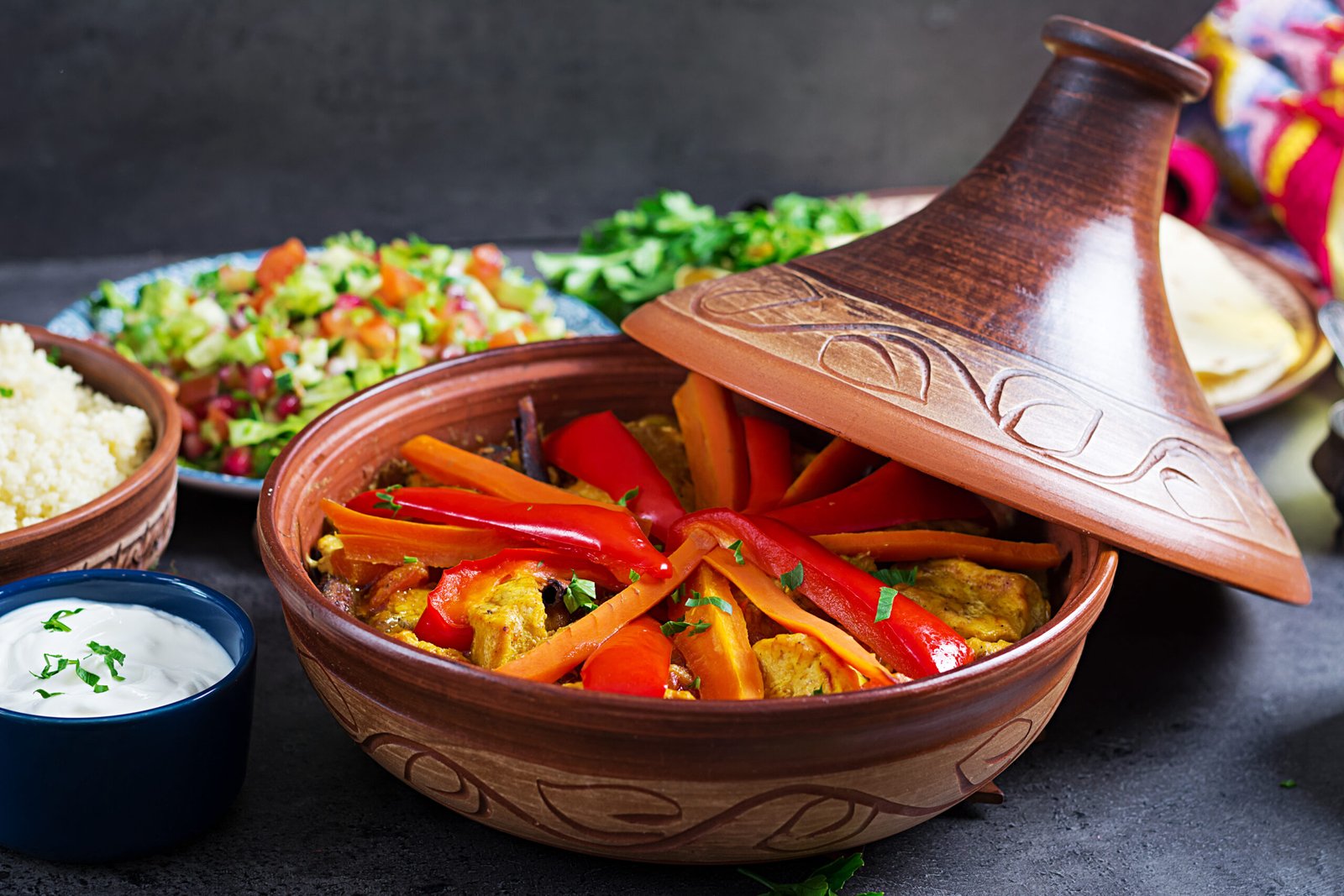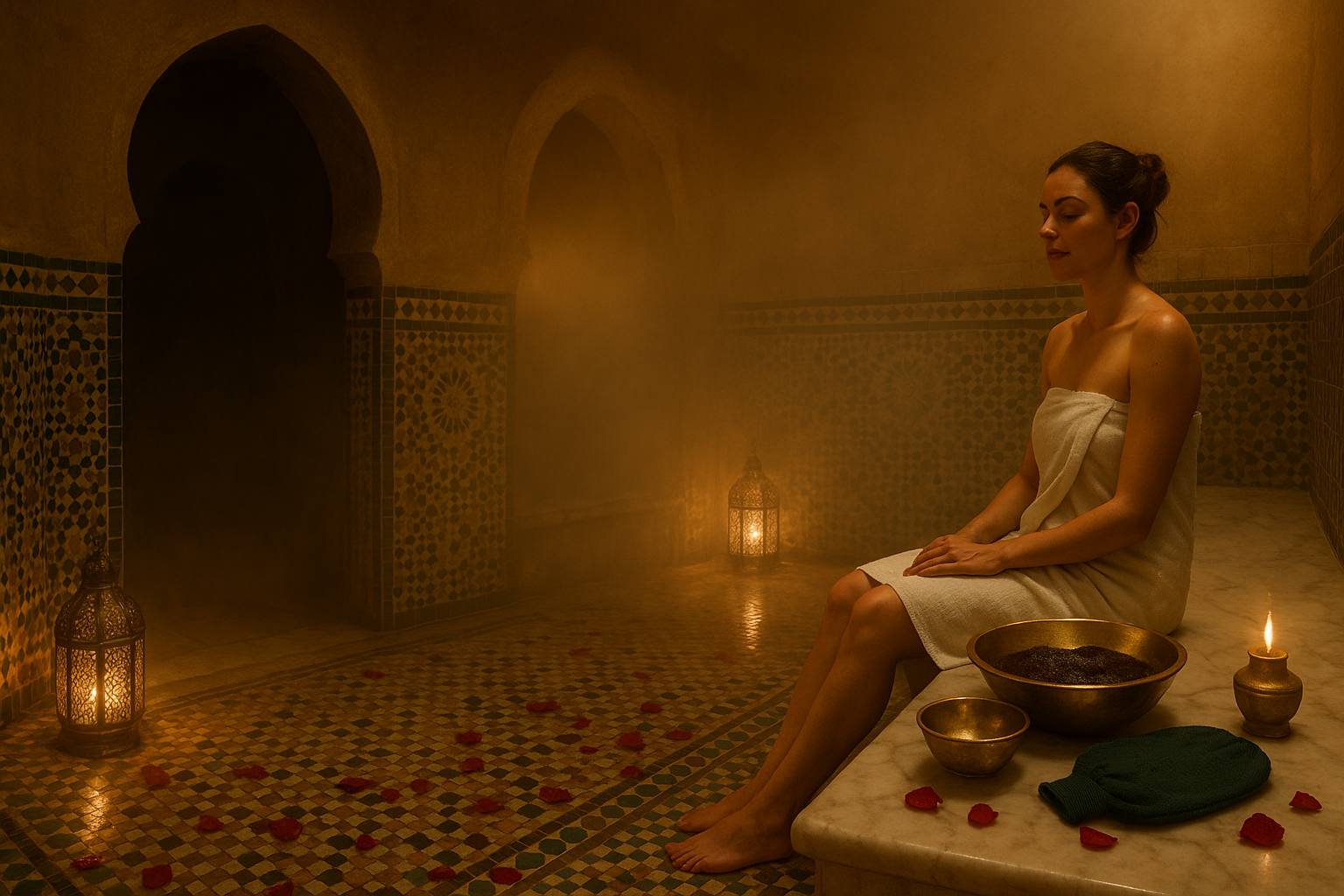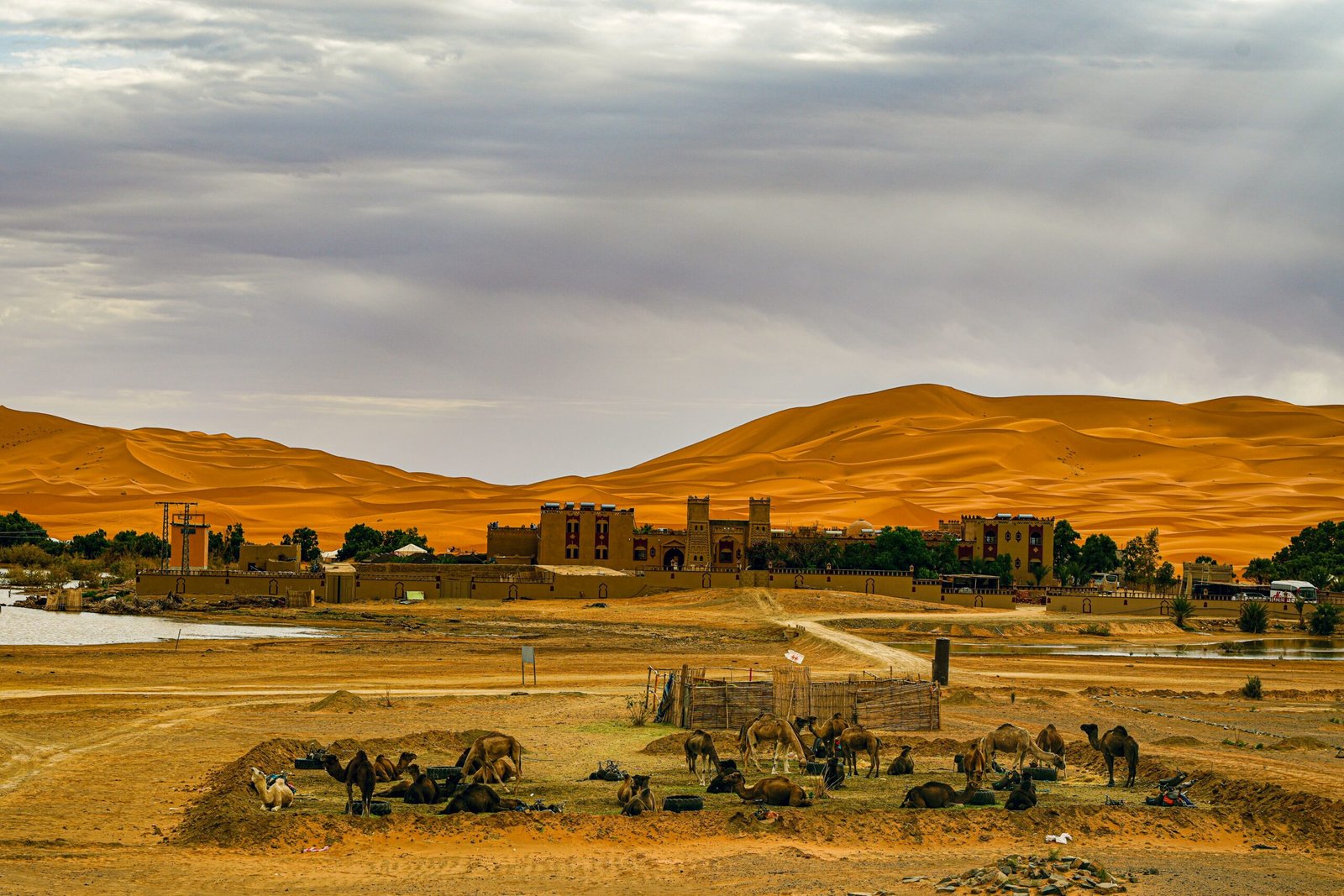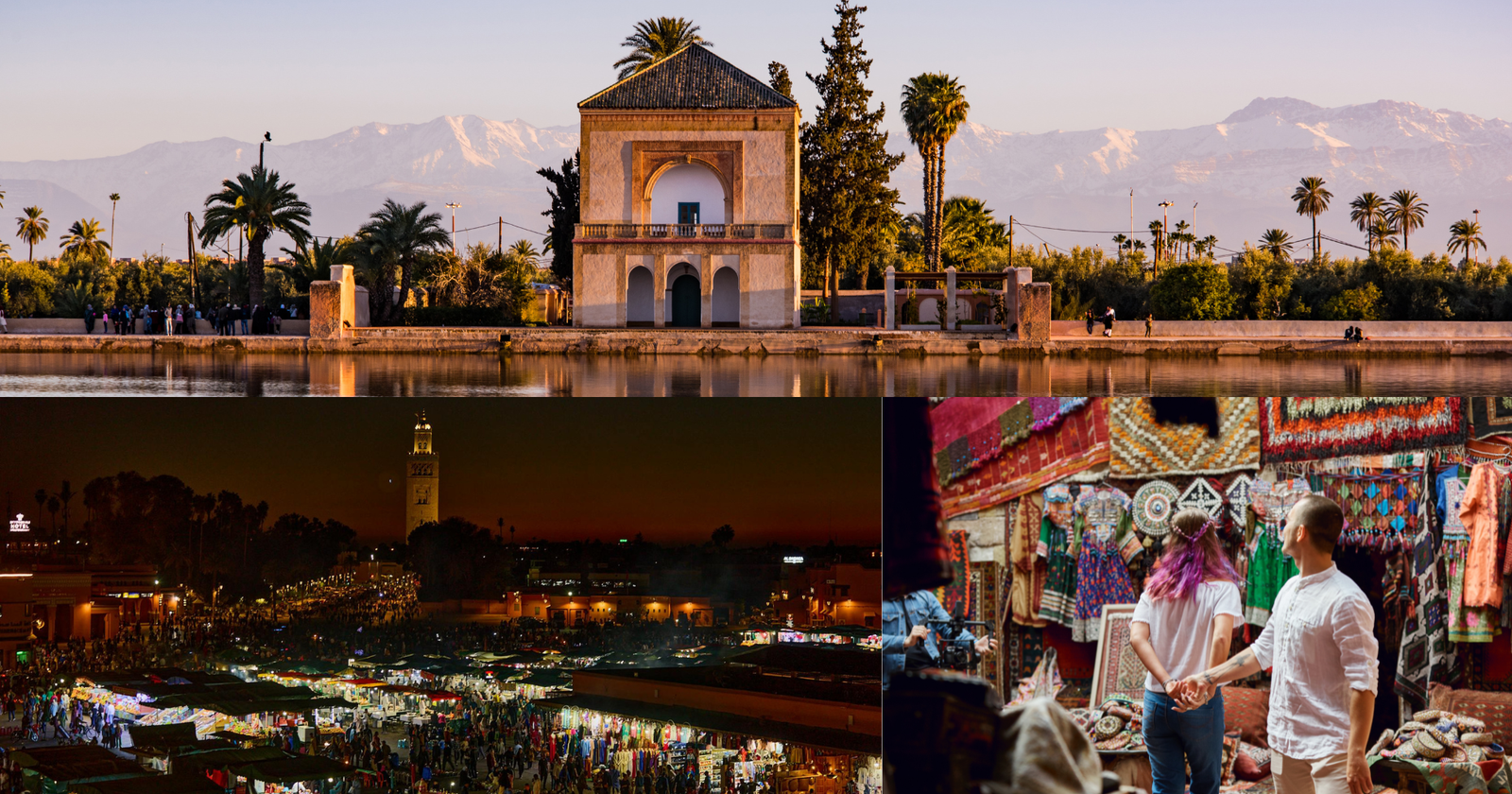So you’re thinking about Moroccan cuisine, right? Your brain probably goes straight to those gorgeous clay pot tagines or maybe sipping mint tea in a colorful café. And yeah, those are amazing—but trust me, authentic Moroccan cuisine is like a whole other universe of flavors waiting to blow your mind. We’re talking layers upon layers of spices, textures that’ll surprise you, and colors that look like they jumped off an Instagram filter. Let me walk you through what Moroccan cuisine is really about, beyond what you see in those tourist spots.
Four Key Misconceptions About Moroccan Food
Before we get into the good stuff, I’ve gotta set the record straight on some things that even food lovers get totally wrong about Moroccan gastronomy.
Misconception 1: Moroccan Food is Spicy
Plot twist: it’s really not! I know, I know—you’re thinking “but there are so many spices!” And you’re right, there are. But here’s the thing: Moroccan cuisine uses spices for flavor, not heat. You’ll taste cinnamon, cumin, ginger, all these warm, cozy spices that smell incredible. But burn-your-mouth spicy? Nah, that’s not really the vibe here. Think aromatic and complex, not “where’s the nearest glass of milk?”
Misconception 2: Tagine and Couscous Are a Single Meal
Okay, this one cracks me up because restaurants do this ALL the time to tourists. But honestly? Moroccans would never eat tagine with couscous as a side. That’s like… I don’t know, putting ketchup on a fancy steak (sorry if that’s your thing). Couscous is its own star player—usually the main event on Fridays when families get together. These are two separate experiences, and they each deserve their moment in the spotlight.
Misconception 3: Moroccan Cuisine is Meat-Heavy
You’d think so from looking at restaurant menus, but traditional Moroccan recipes actually go pretty easy on the meat. Back in the day (and still in many homes), meat was kind of a luxury item. So it shows up in smaller amounts, usually toward the end of the meal after you’ve already loaded up on bread, salads, and veggie dishes. Pretty different from what most people expect, right?
Misconception 4: Dining Out in Morocco Guarantees Authentic Food
Here’s the kicker: about 90% of Moroccan restaurant food is cooked specifically for tourists. Yep, you read that right. The real deal—the stuff that’ll make you want to move to Morocco—that’s happening in people’s homes. If you want authentic Moroccan gastronomy, you’ve gotta find places that cook like somebody’s grandma is in the kitchen, or better yet, wangle an invitation to an actual home-cooked meal.
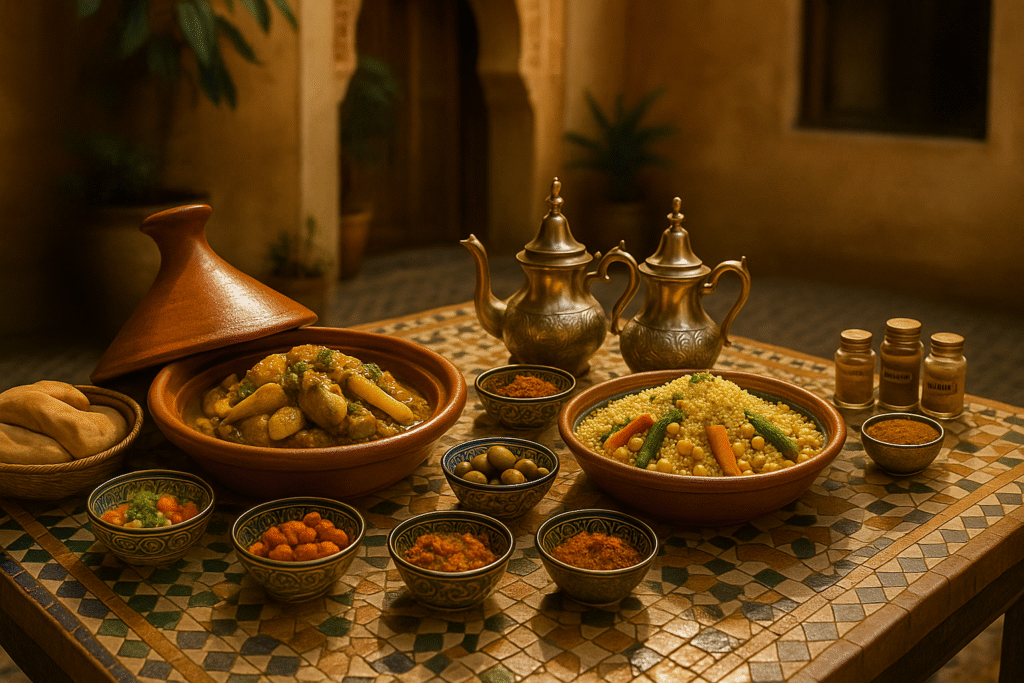
A Culinary History: Key Cultural Influences on Moroccan Cuisine
The coolest thing about Moroccan cuisine? It’s basically a 2,000-year-old fusion experiment that actually worked.
Berber Roots (The Foundation)
So the Berber people were here first, and they’re the ones who invented that iconic tagine pot over 2,000 years ago. No big deal, right? They also figured out how to slow-cook everything to perfection and came up with ways to preserve meat (called khlii) before refrigerators were even a thing. Plus, they brought us couscous, chickpeas, and beans. Basically, they laid the foundation for everything delicious that came after in Moroccan cuisine.
Arab Influences (Spices and Sweet/Savory)
Fast forward to the 7th century, and Arab traders roll in with literal treasure chests of spices from China, India, and Malaysia. We’re talking cinnamon, ginger, paprika, cumin, turmeric—all the hits that now define Moroccan cuisine. They also brought nuts and dried fruits (thanks to Persian influence), which is why you get those sweet-and-savory combos in Moroccan recipes that somehow just work. Like lamb with prunes? Mind-blowing.
Moorish and Jewish-Moorish Contributions
The Moorish era brought olives and olive oil into the mix big time, plus they planted citrus groves everywhere. And the Jewish-Moorish communities? They were preservation wizards—pickling and preserving fruits and veggies like nobody’s business. Those techniques are still essential to Moroccan cuisine today.
Ottoman and French Eras
The Ottomans introduced grilling and kebab culture (thank you very much), and then the French colonization added café culture, wine, ice cream, and fancy pastries. It’s like everyone who passed through Morocco left a little culinary gift behind.
Essential Moroccan Dishes Every Foodie Must Try
Understanding Moroccan cuisine means diving into its iconic dishes—each one telling a story of tradition and flavor.
Tagine (The Versatile Clay Pot)
Okay, so “tagine” means both the cone-shaped clay pot and the stew you cook in it. Pretty confusing, I know. But that pot design is genius—steam rises up, hits the cone, drips back down, and you end up with the most tender, flavorful food ever.
Here’s what you absolutely need to try:
- Chicken Tagine with Olives and Preserved Lemon: This is THE classic. The preserved lemon (we’ll get to that later) is what makes it special. Tangy, aromatic, unforgettable.
- Lamb with Prunes: I was skeptical about this one at first—lamb and prunes?—but wow. The sweetness with the savory meat is actually incredible.
- Kefta Tagine: Spiced meatballs swimming in tomato sauce, sometimes with eggs cracked on top. Comfort food at its finest.
Pro tip: Traditional cooks don’t mix prunes and olives in the same tagine. Each flavor profile gets its own moment.
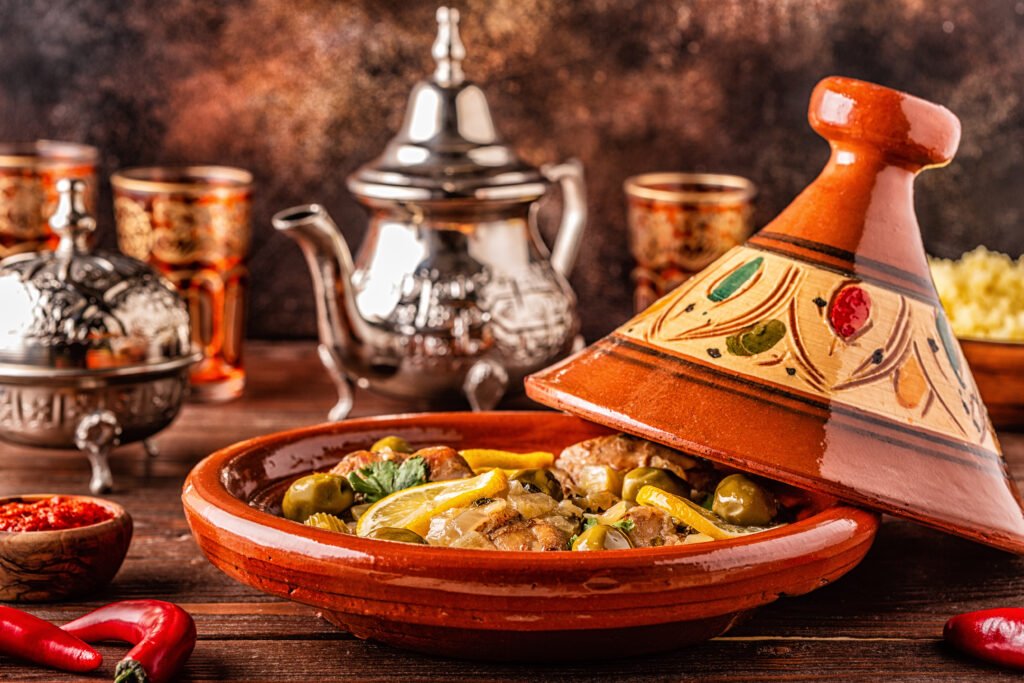
Regional Specialties & Lesser-Known Classics
Tangia: If you’re headed to Marrakech, you NEED to hunt this down. It’s cooked in this vase-shaped pot for seven hours in a hammam oven (yeah, the bathhouse). The meat comes out so tender it basically falls apart if you look at it wrong. This is bucket list material for anyone exploring Moroccan cuisine, people.
Rfissa: This one’s for special occasions—chicken and lentils with these thin strips of fried bread called trid. The bread takes forever to make, so most people just buy it pre-made from the market. Smart move, honestly.
Zaalouk: This aubergine dip starts fights. Seriously. Some people say you should steam the eggplant, others swear you need to burn it over a flame. Either way, it’s smoky, garlicky, and addictive.
Harcha: These are like semolina pancakes but better. You eat them for breakfast with honey, jam, and butter, and they’re crispy on the outside, soft on the inside. I may have eaten these three days in a row. No regrets.
Decoding Moroccan Spices and Essential Ingredients
The soul of Moroccan cuisine lives in its spices and pantry staples—these are the ingredients that make everything magical.
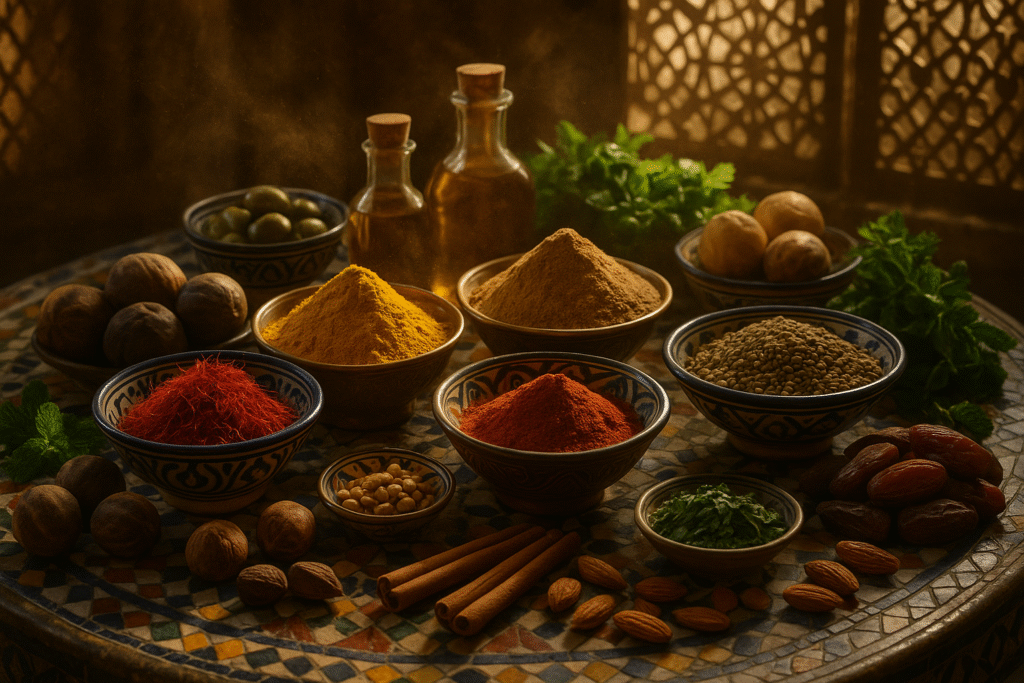
Ras El Hanout: The “Top of the Shop” Spice Blend
The name literally means “top of the shop”—basically the best stuff the spice guy’s got. And here’s where it gets wild: there’s no standard recipe. Some blends have up to 100 different spices! Usually you’ll find turmeric, ginger, cumin, saffron, cardamom, and cinnamon in there, but every merchant has their own secret blend. It’s the main spice for rfissa and shows up in tons of other Moroccan recipes.
Crucial Kitchen Staples
Preserved Lemons: These are lemons that have been cured in salt, and they taste like… okay, there’s no comparison. They’re bright, intense, and totally unique. Once you try a dish with preserved lemon, you’ll get why they’re essential to Moroccan cuisine.
Bread: Listen, in Morocco, bread isn’t just something on the side. It’s THE thing. You use it as a utensil to scoop up food, it’s the base of some dishes, and honestly, a meal without bread isn’t really a meal. There are so many varieties—round loaves, layered flatbreads, you name it.
Argan Oil and Dates: Especially down south, you’ll see argan oil everywhere (it’s nutty and delicious), and dates show up in both savory and sweet dishes throughout Moroccan cuisine.
Navigating Tradition and Modernity (Expert Insight)
So there are chefs like Nargisse Benkabbou who are doing something really cool—they’re taking traditional Moroccan gastronomy and giving it a modern spin without losing what makes it special. We’re talking kefta tagine with jalapeño yogurt sauce or harissa chickpea Caesar salad. Sounds weird, but it works.
The whole idea is to make Moroccan cuisine more approachable for people who didn’t grow up eating it, while still respecting the traditions. And honestly? There’s room for both. Just like you can have fancy French restaurants and cozy bistros, Morocco’s heading toward having traditional spots and modern fusion places existing happily side by side.
Mastering Moroccan Dining Habits and Essential Tools
The Communal Meal
Here’s how a real Moroccan meal goes down: everyone sits around one big tagine in the middle of the table, and you all eat from it using pieces of bread as your utensil. No individual plates for the main dish—it’s communal. Lunch is usually the biggest meal, there’ll be a bunch of cooked salads beforehand, and dessert? Just fresh fruit, whatever’s in season. Simple and perfect.
Choosing Your Tagine Pot
Yeah, traditional clay tagine pots are amazing and they do concentrate the flavors in a special way. But you know what? You can totally make authentic Moroccan cuisine in a regular deep pan with a lid, a slow cooker, or even an Instant Pot. Just use less water since those don’t let steam escape like clay pots do. And if you’re using a regular pot on the stove, grab a heat diffuser so nothing burns.
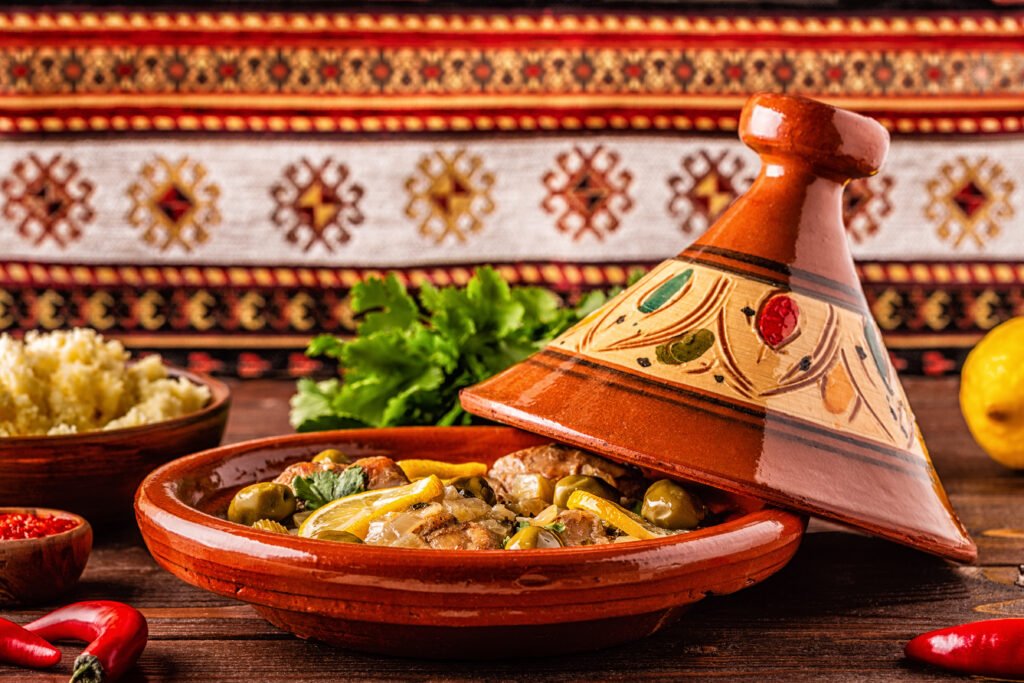
Start Your Moroccan Culinary Journey Today
Look, Moroccan cuisine is basically the result of thousands of years of different cultures saying “hey, try this!” and it all somehow blending into something magical. Once you understand the real deal—that bread is life, that ras el hanout is basically magic dust, and that the best food isn’t in fancy tourist restaurants—you’ll get why people fall in love with this food.
Ready to dive in? Start with something easy like chicken tagine with preserved lemons and olives. And if you’re planning a trip to Morocco, seriously consider a cooking class or food tour with local cooks. Your taste buds (and your Instagram) will thank you. Trust me on this one.


